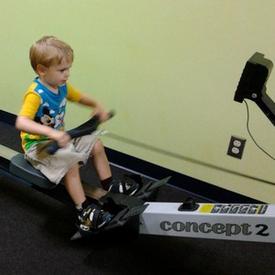Question on calories burned calculated
Options

YukonGrannie
Posts: 3 Member
I am 150 lb and have synced my Fitbit to the MFP app and below is the calculation that MFP came up with - is this right. I’m confused as it shows so many calories for the steps which seems too many and added my 70 min walk calories together.
Is this right???
Thks
Is this right???
Thks
0
Replies
-
This thread has tons of FitBit information: https://community.myfitnesspal.com/en/discussion/10098937/faq-syncing-logging-food-exercise-calorie-adjustments-activity-levels-accuracy/p1
Many people find FitBits to be really accurate, but getting the timing down is important.0 -
Yep, looks just fine. A fitbit (any fitness tracker)with a heart rate monitor is the best way to get your calories burned accurate. I find using MFP to estimate for me always over estimates calories this is because its not taking into account how fit I am.... it just calculates a rough idea based on weight, age, duration.
Feel free to add me as a friend.
0 -
YukonGrannie wrote: »I am 150 lb and have synced my Fitbit to the MFP app and below is the calculation that MFP came up with - is this right. I’m confused as it shows so many calories for the steps which seems too many and added my 70 min walk calories together.
Is this right???
Thks
Fitbit is an all day activity tracker.
The adjustments are for any activity that takes you above what you told MFP your activity level was. It’s not just exercise and it’s not just about steps.
Adjustments are:
Fitbit Burn - (MFP activity level burn + any logged exercise on MFP) = +/- adjustment
Example:
If you tap the adjustment it will take you to a new page. Tap it again on that page and it will show you the math. Sometimes it takes a bit to update the math after logging exercise. Also make sure you have logged the correct start time and duration for the logged workout. Not doing that will cause problems.0 -
Still a bit confused.
Do I still record my 70 minute walks, even though I’m synced with my fit bit?...and use the Fitbit adj calculated as indicated in snapshot in my first post. Or
Only allow for the calorie adj from daily overall activity from Fitbit and not enter my walks on MFP
I’m sorry, I need this spelled out for me, not the sharpest tack in the drawer when is comes to understanding how the calorie count works.
Thanks guys
0 -
Since those numbers of steps is SOooo far beyond sedentary - probably is correct.
Though you don't need to manually enter a walk since fitbit already knew about it and had it's potentially more accurate calorie burn for it.
If curious what Fitbit had - merely start an activity record next time to see those stats on it's own. For past walk, if you know the start and end time - go create an activity record right now and you can see the stats.
So the question is - is the Fitbit estimate of calories burned correct.
With that many steps, having your stride length correct is meaningful to accuracy.
Ever walked a known distance and confirmed Fitbit had the distance correct?
Confirm you walk a known distance at your average daily pace - not grocery store shuffle, not exercise level pace, probably about 2mph or tad less. It should seem slow for the test, 1/2 mile or more best distance.1 -
to keep it simple - don't log the walk - fit bit will do it for you. Also be aware that the extra calories fit bit gives you are a projection of what it things your total activity for the day is. If you walk in the morning, you may see extra calories available, but if you are then sedentary all the rest of the day - those calories will gradually disappear. So if you want to eat back your exercise calories wait 'till later in the day to see how much you actually have.2
-
Thanks0
-
pinkkatmilk wrote: »Yep, looks just fine. A fitbit (any fitness tracker)with a heart rate monitor is the best way to get your calories burned accurate. I find using MFP to estimate for me always over estimates calories this is because its not taking into account how fit I am.... it just calculates a rough idea based on weight, age, duration.
Feel free to add me as a friend.
nope they are still estimates. there isnt anything out there at least that Im aware of thats 100% accurate for calorie burns and heart rate is not an indication of calories burned either. a person can have a high heart rate just sitting around doing nothing,doesnt mean they are burning a lot of calories because its high. so no they arent the best way to get an accurate calories burned.0 -
Yep. Outside of a laboratory environment It's all just estimation and (educated) guess work and outside.
That said some methods are more accurate than others. Activity trackers will get you in the ballpark. Extremity HR monitors will get you closer and chest strap HR will get you closer still.
A power meter on a bicycle will get you very close, and definitely than anything (outside the lab) as it records wattage via strain gauges and can give you the exact amount of kj of energy you've exerted through the pedals. That said even then there's some grey area as the percentage of energy you put through the pedals can be anywhere from 20% - 25% of the total energy burned during the activity with the other 75%-80% of energy being converted to heat so a 1 hour ride at an average of 200 watts can differ +/- 100 calories depending on how efficient your cycling is.0 -
Yep. Outside of a laboratory environment It's all just estimation and (educated) guess work and outside.
That said some methods are more accurate than others. Activity trackers will get you in the ballpark. Extremity HR monitors will get you closer and chest strap HR will get you closer still.
A power meter on a bicycle will get you very close, and definitely than anything (outside the lab) as it records wattage via strain gauges and can give you the exact amount of kj of energy you've exerted through the pedals. That said even then there's some grey area as the percentage of energy you put through the pedals can be anywhere from 20% - 25% of the total energy burned during the activity with the other 75%-80% of energy being converted to heat so a 1 hour ride at an average of 200 watts can differ +/- 100 calories depending on how efficient your cycling is.
Plus the fact you are burning more calories than just the power into the pedals. So even that is underestimated.
Mountain bike riding with lots of upper stuff and coasting - not even accounting for.
Shoot, even coasting down a hill - really burning 0 calories? Not even.
Calories for brain and heart and lung functions - basic metabolism (BMR) - unaccounted for.0 -
allmannerofthings wrote: »to keep it simple - don't log the walk - fit bit will do it for you. Also be aware that the extra calories fit bit gives you are a projection of what it things your total activity for the day is. If you walk in the morning, you may see extra calories available, but if you are then sedentary all the rest of the day - those calories will gradually disappear. So if you want to eat back your exercise calories wait 'till later in the day to see how much you actually have.
Fitbit doesn't give you extra calories - Fitbit only sends the daily calorie burn to MFP.
MFP does the math and gives extra calories.
And it estimates rest of the day from that Fitbit timestamp - at your selected activity level. Rest of the day burn rate has nothing regarding your workout in it.
So if you selected sedentary in your scenario and you were sedentary - you'd be right on. Eat up.
If you actually are more than sedentary - that adjustment will keep increasing. Eat up more.0
This discussion has been closed.
Categories
- All Categories
- 1.4M Health, Wellness and Goals
- 396.6K Introduce Yourself
- 44.2K Getting Started
- 260.8K Health and Weight Loss
- 176.3K Food and Nutrition
- 47.6K Recipes
- 232.8K Fitness and Exercise
- 449 Sleep, Mindfulness and Overall Wellness
- 6.5K Goal: Maintaining Weight
- 8.7K Goal: Gaining Weight and Body Building
- 153.3K Motivation and Support
- 8.3K Challenges
- 1.3K Debate Club
- 96.5K Chit-Chat
- 2.6K Fun and Games
- 4.5K MyFitnessPal Information
- 16 News and Announcements
- 18 MyFitnessPal Academy
- 1.4K Feature Suggestions and Ideas
- 3K MyFitnessPal Tech Support Questions






